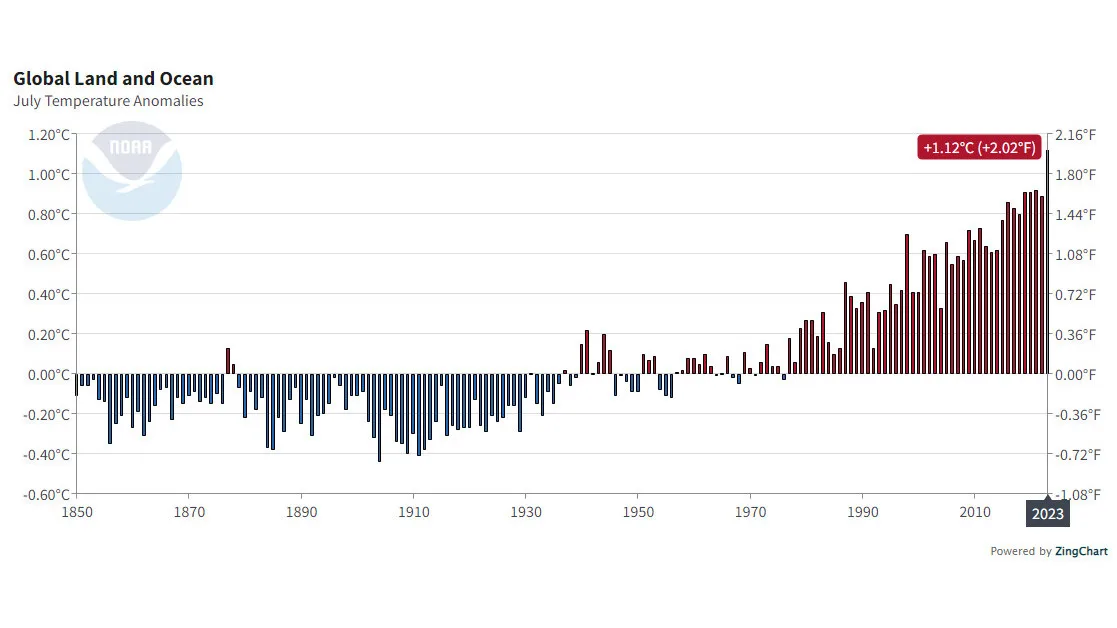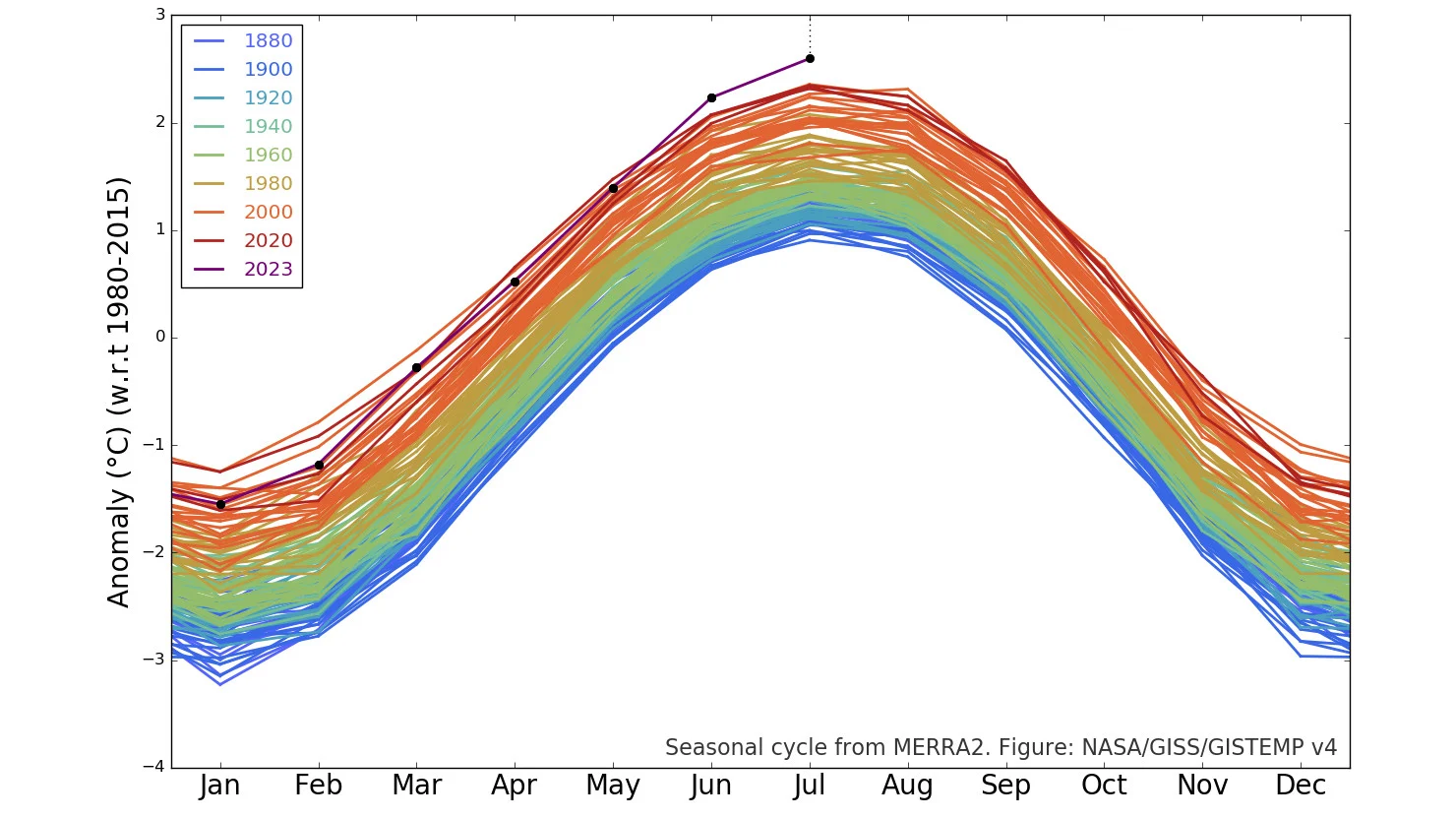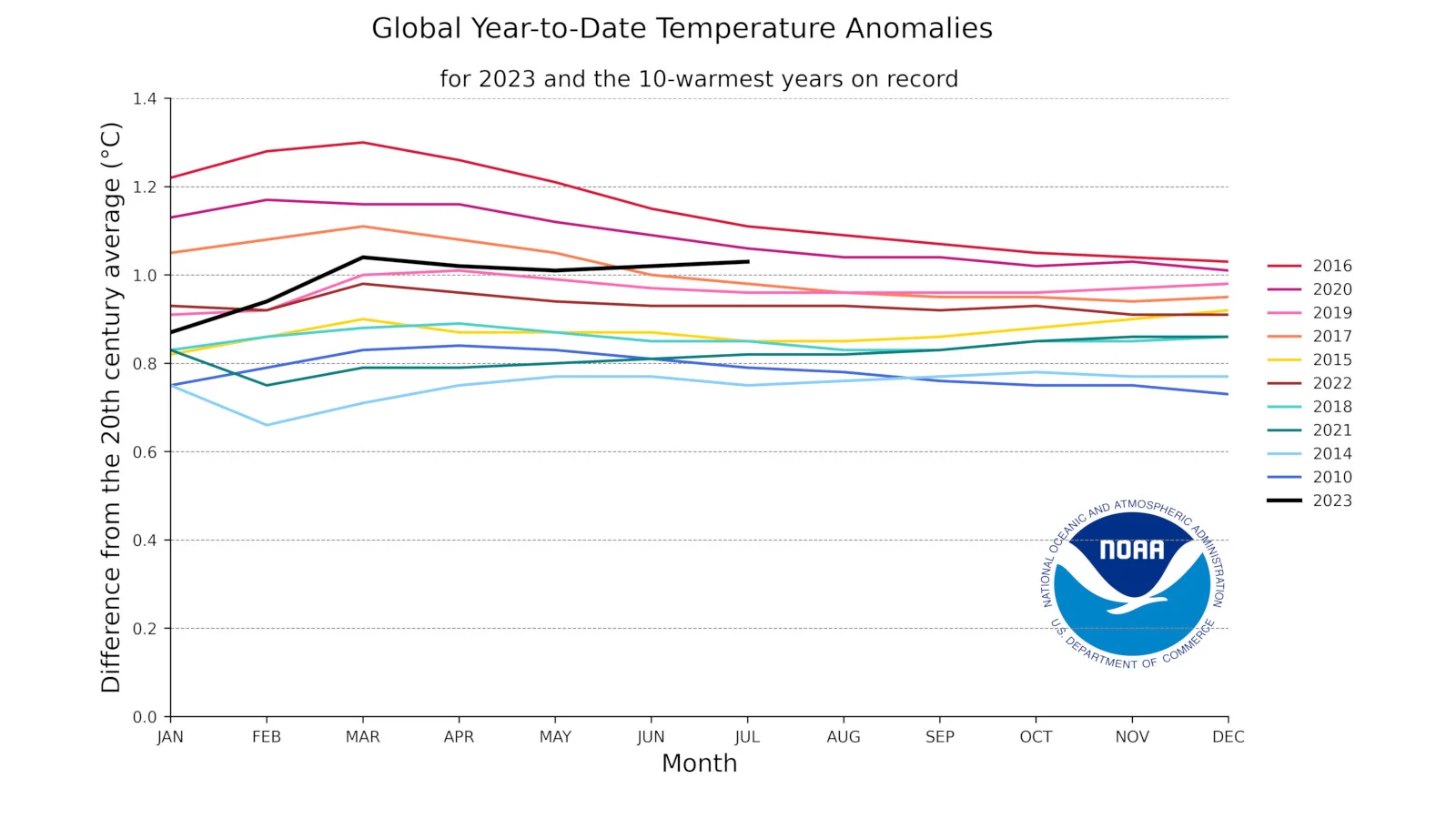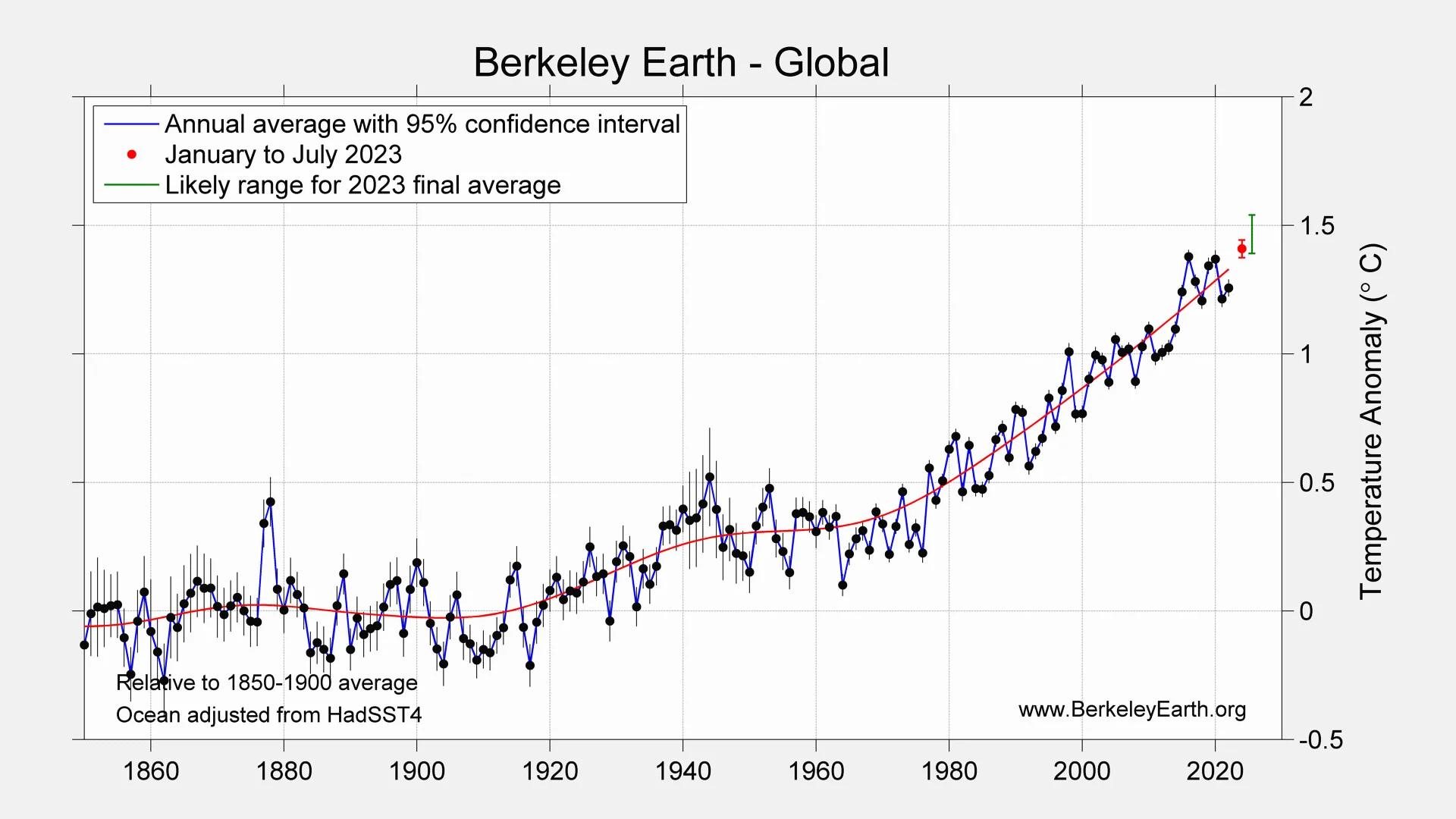
July smashes global heat records, making hottest year even more likely for 2023
Earth may be suffering through the hottest year we’ve ever recorded.
Last month was the hottest month on record for the globe, putting this year even more solidly on track to become the hottest year on record as well.
NOAA, NASA, the Copernicus Climate Change Service, the Japanese Meteorological Agency and Berkeley Earth have unanimously ranked July 2023 as the hottest month of July in their records, some of which go back 173 years to the mid-19th century.
In fact, last month was so warm that it shattered previous records by a wide margin.

This time-series graph plots the temperature anomaly from every month of July from 1850 to 2023, as compared to the average temperature for the months of July during the 20th century. According to NOAA’s records, July 2023 was the hottest on record, at +1.12°C above the average. (NOAA NCEI)
“Climatologically, July is the warmest month of the year. As the warmest July on record, July 2023, at least nominally, was the warmest month on record for the globe,” NOAA stated in a press release.
According to NOAA, the global ocean surface temperature hit a record high for the fourth-consecutive month in July. It was the highest monthly sea surface temperature anomaly (+0.99°C) of any month going back 174 years, beating the previous record set last month (June 2023).
“This July was not just warmer than any previous July — it was the warmest month in our record, which goes back to 1880,” Dr. Gavin Schmidt, the director of NASA’s Goddard Institute for Space Studies (GISS), said in a statement.
“The science is clear this isn’t normal. Alarming warming around the world is driven primarily by human-caused greenhouse gas emissions. And that rise in average temperatures is fueling dangerous extreme heat that people are experiencing here at home and worldwide,” Schmidt explained.

NASA’s GISTEMP Seasonal Cycle graph plots each month’s temperature anomaly (compared to the same month’s temperatures averaged from 1980-2015) to show how global temperatures track with the world’s overall seasonal cycle. July 2023 stands out from the rest as the hottest July in their records. (NASA GISS)
DON'T MISS: July 2023 set to be world's hottest month on record
Hottest year on record?
Throughout the year, climate scientists — especially those at NOAA and Berkeley Earth — reveal the running tally of global temperatures to get a sense of where it will end up compared to previous records.

This “horse race” graph compares the year-to-date global temperature for each month from 2023 with the top 10 hottest years. The diminishing La Niña started 2023 off cooler than most of these years, but the strengthening El Niño pattern combined with the impacts of greenhouse gas emissions is driving temperatures up, putting 2023 in 3rd place as of June and climbing even higher after July. (NOAA NCEI)
As of the end of June, NOAA scientists only gave 2023 a 20 per cent chance of becoming the next hottest year on record. Now, just one month later, that probability has more than doubled, jumping to over 46 per cent. Along with this, NOAA gives a nearly 70 per cent chance of 2023 being the 2nd warmest year, and an over 90 per cent chance of being in the top three.
Even a month ago, researchers at Berkeley Earth were quite confident that this year would set new records. According to their analysis at the time, there was an 81 per cent chance that 2023 would beat out all previous record years.
However, as of their latest assessment, they believe it is now a near certainty.

This plot of annual global temperatures (black dots connected by blue lines) from 1850-2022 includes the year-to-date average for 2023 as of the end of July (red dot + error bar), as well as the statistical likelihood of the outcome of 2023 (green bar). The baseline for the anomalies plotted here is the average from 1850-1900, aka “preindustrial temperatures”. (Berkeley Earth)
“2023 is on pace to be the warmest year yet observed since instrumental measurements began,” Robert Rohde, the lead scientist at Berkeley Earth, wrote in his latest global temperature update. “The surprisingly strong warming in June and July 2023, combined with the likelihood of a strong El Niño event, have increased the forecast for the rest of 2023. The statistical approach that we use, looking at conditions in recent months, now believes that 2023 is virtually certain to become the warmest year on record (99% chance).”
Berkeley Earth’s forecast includes a roughly 20 per cent chance that 2023’s overall global temperature will exceed +1.5°C above the pre-industrial average (the top end of the green bar in the above graph).
This benchmark, of +1.5°C above the 1850-1900 average, was set by the 2015 Paris Agreement as an essential goal for limiting the impacts of human-caused global warming. If 2023 temperatures do reach that threshold, it will not mean that we have failed in that goal, though, as it will only represent a temporary breach. The Paris Agreement strives to keep global temperatures from exceeding that benchmark permanently.
However, given what we’ve seen during past El Niños, the second year of the event is invariably hotter than the first. Thus, if 2023 exceeds +1.5°C, 2024 most certainly will, as well. On the other hand, if this year comes in a bit cooler than that, it becomes even more likely that it will be breached next year. This is especially true considering the dramatic increase in the magnitude of recent temperature anomalies.
(Thumbnail courtesy NASA GISS)











